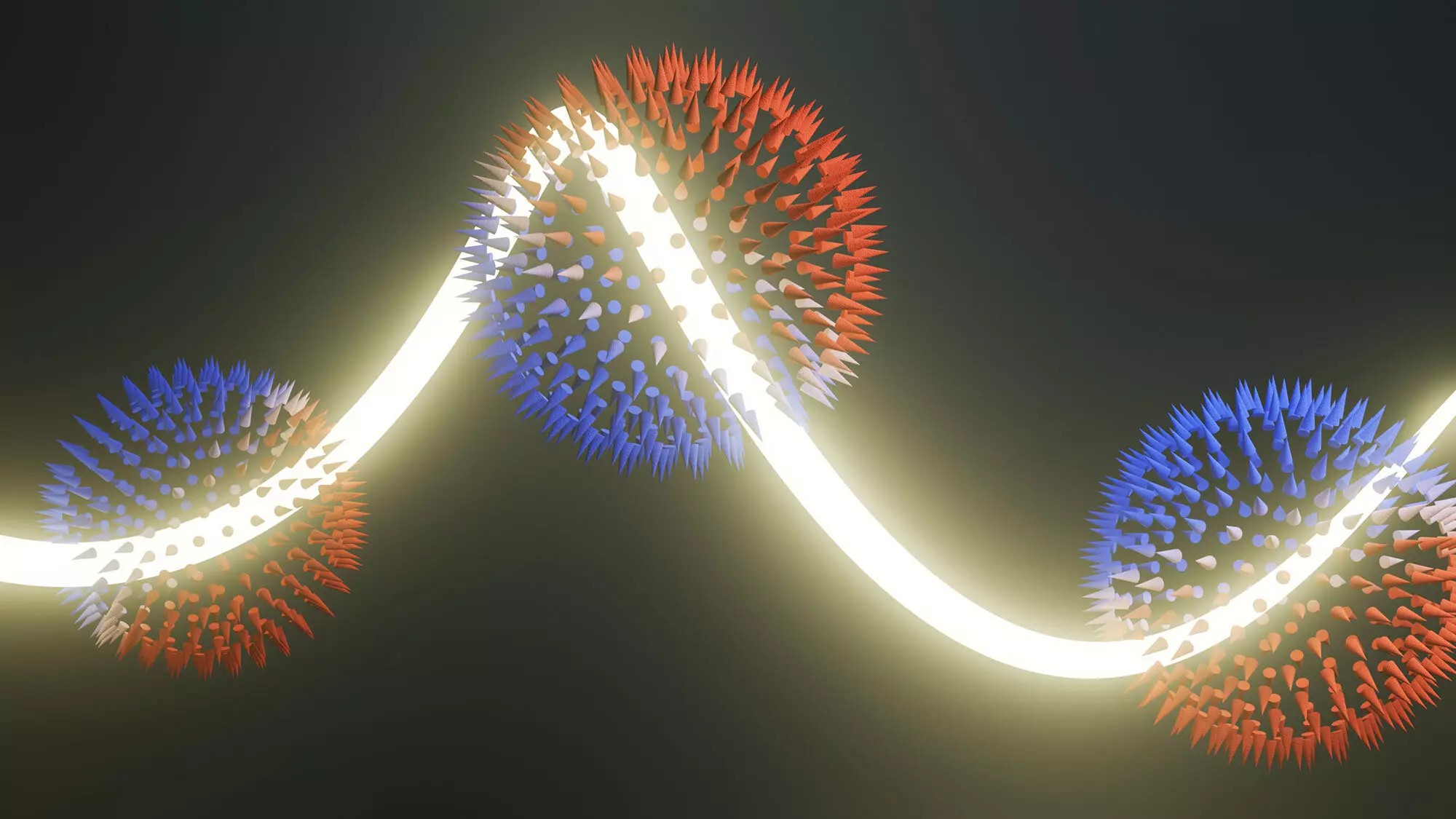The quest for more energy-efficient technologies has led researchers to explore innovative fields that transcend traditional electronics. Among these emerging areas, orbitronics stands out as a promising technology that harnesses the orbital angular momentum (OAM) of electrons for information processing. Unlike conventional electronics, which depend primarily on the charge of electrons, orbitronics attempts to exploit the spatial arrangement of electrons orbiting atomic nuclei. This emerging field has the potential to revolutionize memory and data transfer mechanisms, paving the way for devices that consume less energy and boast higher efficiency.
Researchers have been particularly intrigued by orbital angular momentum monopoles, which are theorized structures where OAM flows in a uniform direction radiating outwards from a central point. The establishment of these monopoles could be a game-changer in orbitronics, as their isotropic nature allows for versatile generation of OAM, which could be directed anywhere. However, until recently, these conceptual structures had only existed in theoretical models, prompting a need for empirical validation through innovative experimental techniques.
A significant milestone was achieved by an international research team, spearheaded by scientists from Switzerland’s Paul Scherrer Institute (PSI) and Germany’s Max Planck Institutes. Their comprehensive study, published in the journal Nature Physics, has confirmed the existence of OAM monopoles within chiral topological semi-metals – a unique class of materials identified at PSI in 2019. These materials are characterized by their helical atomic structures, similar to the DNA double helix, granting them a natural handedness that could facilitate the generation of OAM flows.
The potential advantages of utilizing chiral topological semi-metals over traditional materials like titanium are substantial. These semi-metals can intrinsically produce OAM textures without the need for external energy inputs, simplifying the process of generating stable and efficient OAM currents. This self-sustaining characteristic enhances the practicality of orbitronics technologies, making them more accessible for real-world applications.
To adequately investigate the existence of OAM monopoles, the research team employed an advanced technique known as Circular Dichroism in Angle-Resolved Photoemission Spectroscopy (CD-ARPES). This technique utilizes circularly polarized X-rays from synchrotron light sources to probe the electronic structure of materials by ejecting electrons and analyzing their spatial and energetic distributions. However, the previously anticipated correlation between circularly polarized light and OAM measurements proved more complex than originally thought.
By meticulously analyzing CD-ARPES data and addressing several theoretical assumptions, the researchers uncovered that the relationship between the light signal and OAM wasn’t straightforward. They recognized the necessity of varying photon energies during experimentation to reveal intricate patterns of OAM hidden within the data . This rigorous approach allowed them to construct a cohesive understanding that bridged the historical gap between theory and experimental observation.
The Marvel of OAM Polarity and Future Directions
Upon successfully visualizing OAM monopoles, the research team dramatically broadened the potential applications of these structures. Notably, they discovered that the inherent properties of chiral topological semi-metals allow for tuning the polarity of OAM monopoles. Depending on the chiral characteristics of the crystal, the directionality of the OAM spikes can be reversed, offering unprecedented control over the outputs of orbitronic devices.
This newfound ability to manipulate OAM polarity is crucial, allowing for the design of devices that can potentially operate in multiple directions or configurations. As research continues, the implications for the broader field of orbitronics are profound, with the potential for developing advanced memory devices, energy-efficient computation technologies, and novel data transmission methods.
The validation of OAM monopoles is a landmark achievement that opens up new horizons for the field of orbitronics. The exploration of chiral topological semi-metals presents an exciting frontier, bridging theoretical concepts with tangible experimental results. As researchers delve deeper into optimizing various materials for the generation of OAM currents, the vision of a stable, energy-efficient technology landscape draws closer to reality.
Harnessing the potential of OAM in circuits could redefine our technology landscape, contributing to a more sustainable future with reduced energy consumption. The synthesis of theory, experimentation, and innovative materials will be paramount as the scientific community endeavors to unlock the numerous applications that orbitronics has to offer. The challenges of understanding and manipulating such complex phenomena are significant, but the rewards—both for scientific knowledge and practical technology—are undoubtedly worth the effort.


Leave a Reply